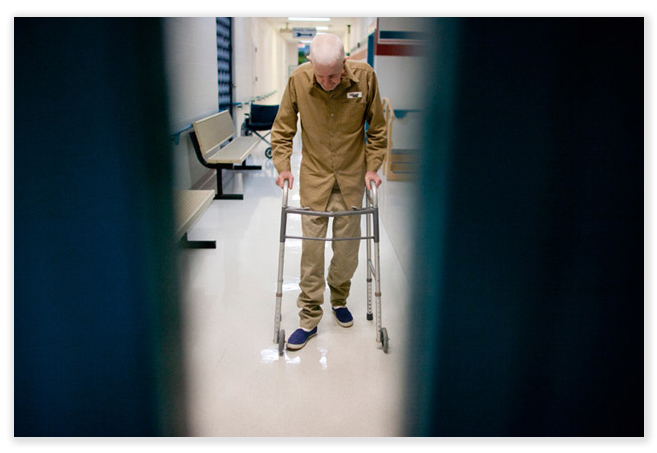We post news and comment on federal criminal justice issues, focused primarily on trial and post-conviction matters, legislative initiatives, and sentencing issues.
THE LAGNIAPPES
 In New Orleans, a lagniappe is a little gift that comes with goods and services you buy. The FIRST STEP Act, which we’ve been writing about the past few days, has a few lagniappes, too.
In New Orleans, a lagniappe is a little gift that comes with goods and services you buy. The FIRST STEP Act, which we’ve been writing about the past few days, has a few lagniappes, too.
First, the law has always said that inmates can earn 54 days a year in good time. The BOP, being the bureaucracy it is, interpreted that in the most restrictive way possible, a tortured reading that after a year, you get your 54 days. Everyone else with a GED or above thought that you get 54 days after 319 days, to make a full year. The BOP’s twisted interpretation, upheld by the Supreme Court (and – note to Justice Gorsuch, we cannot limit Chevron deference soon enough), screwed inmates out of seven days a year.
 FIRST STEP cleans up the good-time language of 18 USC 3624(b) to get inmates the extra seven days, and makes the change retroactive to the first day of an inmate’s current sentence. So in a 60-month sentence, a prisoner will get 35 more days lopped off his or her sentence. It may not seem like a lot, but everyone with a release date (not including lifers and death sentence people) – no matter what the offense – gets the cut.
FIRST STEP cleans up the good-time language of 18 USC 3624(b) to get inmates the extra seven days, and makes the change retroactive to the first day of an inmate’s current sentence. So in a 60-month sentence, a prisoner will get 35 more days lopped off his or her sentence. It may not seem like a lot, but everyone with a release date (not including lifers and death sentence people) – no matter what the offense – gets the cut.
The bill also directs the BOP to make placing an inmate near home for his or her whole sentence a top priority. BOP still has wiggle room, but the 500-mile distance will now be 500 driving miles, not the 500 straight-line miles BOP used previously, which were a hardship to so many. A real-life example: an inmate from Port Huron, Michigan – at the southern end of Lake Huron – was sent to MDC Brooklyn, a federal prison in New York City. That was well within 500 air miles from Port Huron, but was 685 miles by road (unless the family cut through Canada, where it was still 610). Under the old BOP standard, New York City was “close to home” north of Detroit. Under the new one, not so much.
The bill also amends 18 USC Sec. 3624(c)(2) to require the BOP, “to the extent practicable, place prisoners with lower risk levels and lower needs on home confinement for the maximum amount of time permitted under this paragraph.” That time, 10% of the sentence up to six months, remains unchanged.
 Finally, the bill re-ups the BOP’s elderly offender program. The original program, authorized by Congress in the Second Chance Act of 2008, was a whopping failure. Out of 200,000 inmates in the system, the BOP only found 85 people who met its criteria for the program. The BOP found that the program achieved no cost savings, a finding that was sufficiently puzzling that Congress sic’ed the Government Accountability Office on the project. The GAO, unsurprisingly, found that the BOP had cooked the books, and substantially understated the costs of keeping people locked. up.
Finally, the bill re-ups the BOP’s elderly offender program. The original program, authorized by Congress in the Second Chance Act of 2008, was a whopping failure. Out of 200,000 inmates in the system, the BOP only found 85 people who met its criteria for the program. The BOP found that the program achieved no cost savings, a finding that was sufficiently puzzling that Congress sic’ed the Government Accountability Office on the project. The GAO, unsurprisingly, found that the BOP had cooked the books, and substantially understated the costs of keeping people locked. up.
The FIRST STEP Act extends the pilot program to the whole BOP system, not just a few prisons. Also, the bill drops the age for an elderly offender from 65 to 60, drops the requirement that the percentage of sentence completed from 75% to 67%, and completely eliminates the requirement that the inmate have served at least 10 years to be eligible.
 Best of all, the elderly offender program, the eligible terminally ill offender program, and the compassionate release programs would all now permit the inmate to file with the courts for the program directly. Previously, the BOP was the sole gatekeeper under 18 USC 3582(c)(1). Generally, a snowball stood a better chance in Death Valley than an inmate stood of getting the BOP to recommend an elderly or compassionate release program.
Best of all, the elderly offender program, the eligible terminally ill offender program, and the compassionate release programs would all now permit the inmate to file with the courts for the program directly. Previously, the BOP was the sole gatekeeper under 18 USC 3582(c)(1). Generally, a snowball stood a better chance in Death Valley than an inmate stood of getting the BOP to recommend an elderly or compassionate release program.
H.R. 5682, The FIRST STEP Act (May 9, 2018)
– Thomas L. Root

